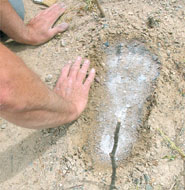
June 14, 2006

Today, media began carrying reports that Bob Olson, a Cass County grater operator has found Bigfoot tracks near Deer River, Minnesota, and NBC-TV 4 local news did a good segment on his find.
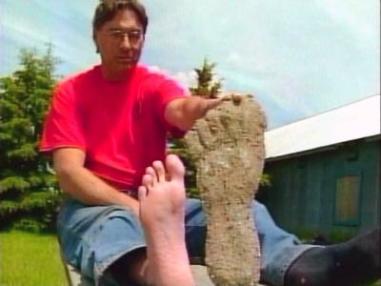
Olson first heard about the tracks from his granddaughter, relocated them and made casts of two of the 15-inch prints, which make the 6-foot-5-inch tall man’s size-14 feet look small.
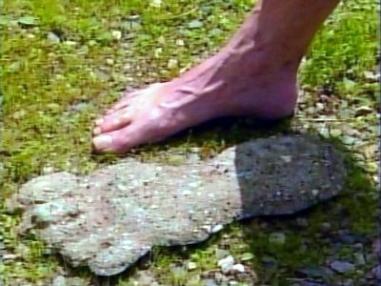

A report in the Herald-Review of Grand Rapids gave more details.
The site is remote and near Six Mile Lake Road in eastern Cass County (just west of Ball Club). Carloads are coming to view the large, mysterious footprints left on the edge of the road.
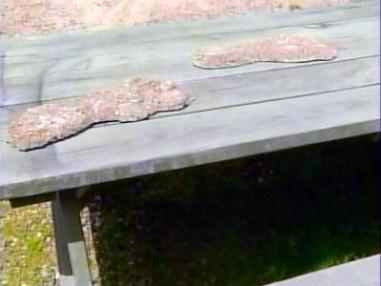
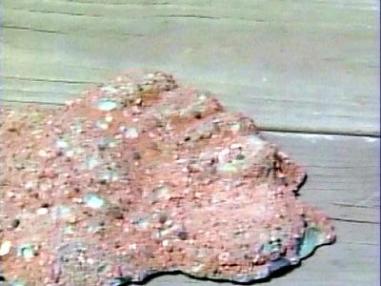
Bob Olson thinks the tracks are from a Bigfoot, but everyone does not agree.
“No such thing exists,” said retired Department of Natural Resources wildlife biologist Jim Schneeweis of Grand Rapids. “If there were all these Bigfeet running around, sooner or later somebody would have found a dead one. The DNR has had cameras (in remote locations) for years. How come nobody’s ever got one on film?”
While wildlife biologists say that Bigfoot stories are not founded in scientific evidence, that does not seem to stop those who do believe such creatures exist. A simple Google search will reveal hundreds of reported sightings around the nation and entire Web sites devoted to the tracking of the creatures.
Schneeweis said that he was not aware of any sightings or other evidence reports of the existence of Sasquatch creatures out of the Grand Rapids office, but did say that he was aware of sighting reports in the Northome area in the past.
Olson, who carefully made plaster reproductions of the giant human-looking prints this week to preserve them, said that there have been numerous sightings in northern Minnesota – including some on Winnie Dam Lake Road. The self-described enthusiast, said that he has heard reports of increased Bigfoot activity in the area for the past two years.
He is not the only one who is interested.
Local resident Wayne Nelson called in the report of possible Bigfoot evidence to the newspaper on Monday, saying that, on his way to go fishing, he saw people taking pictures of the ground between the road and the woods.
After pulling over and speaking with the people there, Nelson realized what they were looking at: 17 inch long tracks, about three-quarters of an inch deep into the dirt.
Looking like human footprints, but larger and with toes of all the same size, there was speculation that the tracks were not human because human tracks normally only reach a depth of about one-quarter inch, according to Nelson.
The prints, no matter what the source, have generated curiosity and despite the disbelief of the scientific community, it has done little to sway those who are certain Sasquatch creatures exist.
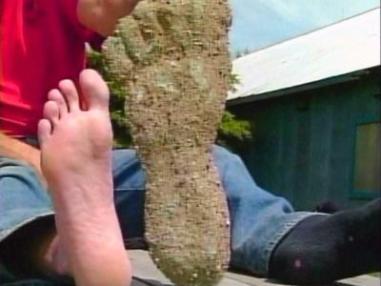
This focus of new Bigfoot track discoveries in Cass County, Minnesota, reminded me of one of my favorite cases from the 1960s – known with the tag phrase "Sister Lakes" – from Cass County, Michigan.
In May and June 1964, Sister Lakes, Michigan, was the location for many reports of an 8 to 9 feet tall Bigfoot, seen by Mr. & Mrs. John Utrup, Gordon Brown, Joyce Smith, Patsy & Gail Clayton, and serveral others. It had the rather distinctive shaggy look often reported from these Midwestern accounts.
Both might be examples of Marked Hominids, the geographic race of so-called Eastern Bigfoot.
About Loren Coleman
Loren Coleman is one of the world’s leading cryptozoologists, some say “the” leading living cryptozoologist. Certainly, he is acknowledged as the current living American researcher and writer who has most popularized cryptozoology in the late 20th and early 21st centuries.
Starting his fieldwork and investigations in 1960, after traveling and trekking extensively in pursuit of cryptozoological mysteries, Coleman began writing to share his experiences in 1969. An honorary member of Ivan T. Sanderson’s Society for the Investigation of the Unexplained in the 1970s, Coleman has been bestowed with similar honorary memberships of the North Idaho College Cryptozoology Club in 1983, and in subsequent years, that of the British Columbia Scientific Cryptozoology Club, CryptoSafari International, and other international organizations. He was also a Life Member and Benefactor of the International Society of Cryptozoology (now-defunct).
Loren Coleman’s daily blog, as a member of the Cryptomundo Team, served as an ongoing avenue of communication for the ever-growing body of cryptozoo news from 2005 through 2013. He returned as an infrequent contributor beginning Halloween week of 2015.
Coleman is the founder in 2003, and current director of the International Cryptozoology Museum in Portland, Maine.
Filed under Artifacts, Bigfoot, CryptoZoo News, Cryptozoology, Forensic Science, Sasquatch, Television